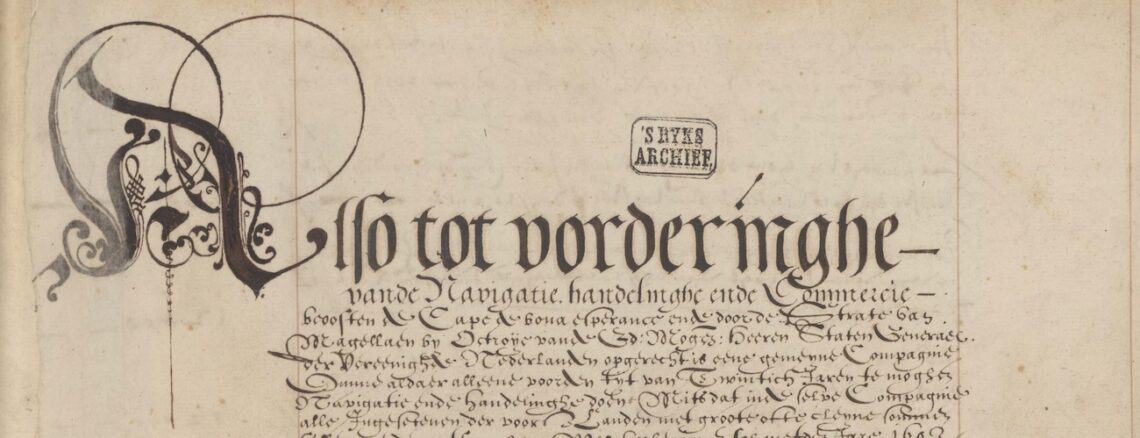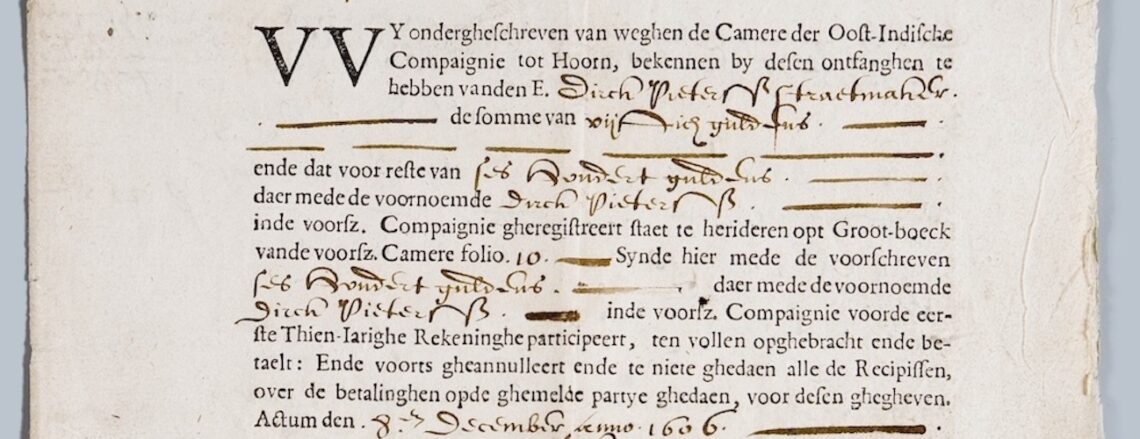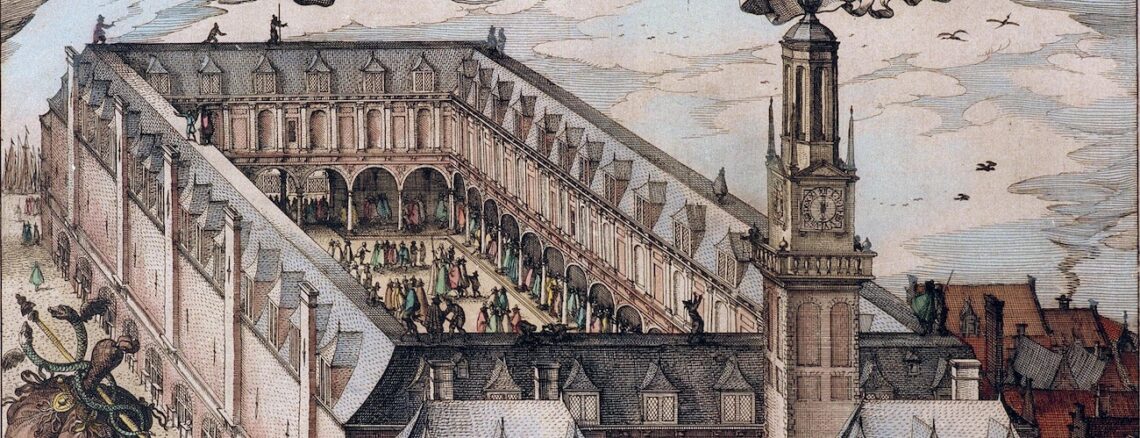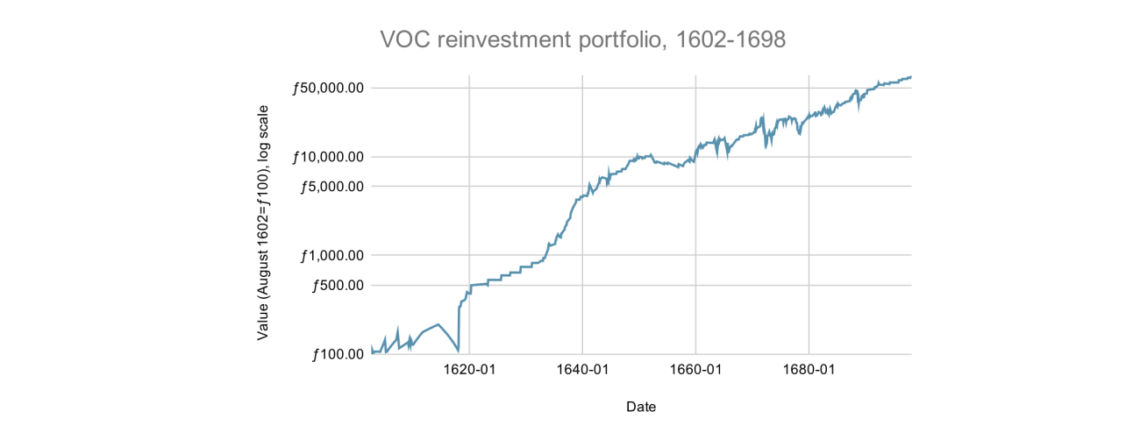-
About this website
The Dutch East India Company (Verenigde Oost-Indische Compagnie, VOC) was a conglomerate whose operations almost exactly span the 17th and 18th centuries. It is known for trading spices and other Asian commodities in a large area centered around modern-day Jakarta in Indonesia, and shipping these to Europe. The company had a deep and long-lasting impact on the history of Asia, largely in a negative sense: the VOC gained a dominant position in the spice trade by use of force, committed genocide on the Banda Islands, made use of slave labor and also actively traded enslaved people. The VOC also had a deep and long-lasting impact on the history of finance…
-
The world’s first IPO
The Dutch East India Company (VOC) held its ‘initial public offering’ (IPO) in August 1602. It was the first of its kind in world history and therefore a key event in financial history, and the history of the capitalist world. A public share issue The IPO had been announced in the VOC charter—the company’s founding document of March 20, 1602. “All the residents of these lands,” stated article 10, “may buy shares in this Company.” Subscribers could decide for themselves how much to invest: there was no minimum or maximum. The next article stated that posters would be put up announcing the IPO. There had been companies before the VOC…
-
Going short in 1608
Buying a stock, or taking a ‘long position’ in financial jargon, is what you do when you expect the price of that stock to go up. If, on the other hand, you expect the price of a stock to go down, you can take a ‘short position’. This can be done by borrowing stocks from a third party and then selling these. When the price indeed goes down, you can buy the stocks back at a lower price before returning them to the lender, and thus make a profit. Nowadays, this is an everyday activity for many stock traders, made easy by the services of brokerage firms. Remarkably, it was also daily practice in…
-
The oldest share
The VOC was the world’s first company whose shares were actively traded. It would therefore make sense that the world’s oldest share certificates had been issued by the VOC. It is not quite like that, however. The VOC charter of March 1602 stated that the company would issue registered shares. Subsequently, the introduction to the capital subscription ledger of August 1602 explained the procedure for transferring the ownership of a share. (Read more about these documents and the IPO of the Dutch East India Company in this blog post.) When two share traders had struck a deal, the buyer and the seller (or their authorized representatives) had to appear together…
-
The VOC and Amsterdam’s first exchange building
This image shows the exchange building of Amsterdam in the early-modern era, known as the Hendrick de Keyser Exchange, after the building’s architect. It no longer exists. After two centuries of subsidence problems, the city decided to tear it down in the 19th century. It used to stand just south of Dam Square, where it was built over the watercourse of the Amstel River—small vessels could pass underneath. This had probably been too ambitious for the early 17th-century builders and caused the subsidence problems. From August 1611, when the exchange building opened, this was the place where most share transactions were negotiated. But it was not a stock exchange as…
-
Was the VOC the most valuable company ever? (Answer: NO!)
On August 19, 2020, the market capitalization of Apple crossed the $2 trillion mark (that’s $2,000,000,000,000). Apple is the world’s most valuable company right now. But is it also the most valuable company of all time? The Saudi Arabian oil giant Saudi Aramco was briefly valued at $2.03 trillion when shares amounting to 1.5% of its capital began trading on the stock exchange of Saudi Arabia in December 2019. (At the time of writing, it is worth a lot less, due to the fact that the oil price plummeted after the corona virus outbreak in early 2020.) However, numerous websites claim that at some point in history various historical trading…
-
What was the return on VOC shares?
Did investors in the world’s first IPO get rich? In this blog post, I’ll give the answer, based on VOC share price data that I collected from various archival sources during the research for my book. I’ve made my data available for download and reuse in a Google Sheets document. VOC share price data The price data are sketchy. Neither the exchange clerk nor the VOC itself recorded the prices. However, for the 17th century, I found 851 share price observations in financial papers and correspondences of merchants, notarial deeds, and, occasionally, newspapers. The following chart shows average monthly prices for shares in the Amsterdam branch of the VOC. (Shares…
-
Confusión de confusiones (1688): a historical stock exchange drama
Confusión de confusiones, published in Amsterdam in 1688, is the world’s first book on the stock trade. Ever since the Financial Times included it in its list of ‘Ten Best Books Ever Written on Investment’ (January 28, 1995), interest in this book has soared. It is certainly a very special book, and it definitely stands out from the titles that are usually picked for such lists. But can it serve as a guide to modern investors, as the Financial Times suggested? Dialogues between a merchant, a philosopher and a share trader There are three characters in Confusión de confusiones. Two of them, a merchant and a philosopher, have heard about the trade in shares…
-
The world’s first public company, founded by the state
It sounds odd, but it is true: the world’s first public company was founded by a state government. The Dutch East India Company (VOC) owed its existence to the States General of the Dutch Republic and in particular to Dutch statesman Johan van Oldenbarnevelt (pictured below). Johan van Oldenbarnevelt (1547-1619), painted by Michiel Jansz. van Mierevelt around 1616 Rijksmuseum Amsterdam. License: CC0 A forced merger Before the founding of the VOC in 1602, there were already Dutch companies that sent expeditions to East Asia to trade spices. They were temporary enterprises—generally referred to as the precompanies (voorcompagnieën). In 1595 the flotilla of the earliest precompany, the Compagnie van Verre, set…









